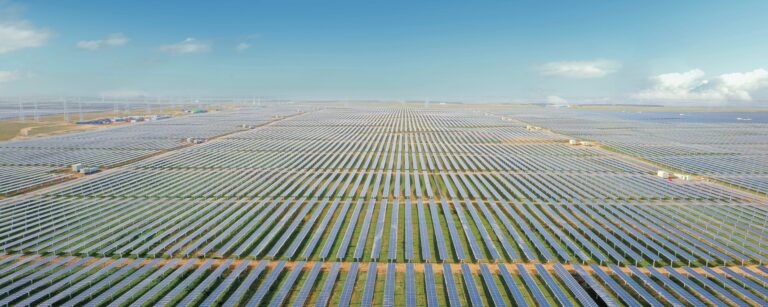The country accounted for 64% of global jobs in the photovoltaic sector and 63% of added PV capacity last year, according to a new report.
Phovoltaics continued to lead job growth in the global renewable energy sector last year, supporting a total of 7.2 million jobs around the world, of which almost 64%, or 4.5 million, are in China, the dominant PV manufacturer and installer, according to a new report from the International Renewable Energy Agency (IRENA) and the International Labor Organization (ILO).
Overall, 2023 saw the highest ever increase in renewable energy jobs, from 13.7 million in 2022 to 16.2 million. The 18% year-on-year jump reflects strong growth in renewable energy generation capacity, along with continued equipment manufacturing expansion. Renewable energy and jobs – Annual review 2024 found.
However, the report illustrates an uneven global picture: almost two-thirds of new global solar and wind capacity was installed in China alone last year. The country leads the way with an estimated 7.4 million renewable energy jobs, or 46% of the global total. The EU follows with 1.8 million, Brazil with 1.56 million, and the United States and India, each with almost 1 million jobs.
China has also been instrumental in expanding renewable energy sources in Southeast Asia through major investments, transforming the country into a major solar energy export center and creating jobs in the region.
The EU, with its combined 27 member states, follows China in terms of PV jobs with 720,000. India had 319,000 jobs in the solar sector, ahead of the US with 279,000 and Brazil with 264,000.
In terms of installed capacity, a record 347 GW of solar power was added globally – 74% more than the previous record in 2022. China accounted for 63% of that added capacity, followed by the US with 7.2%, Germany with 4.1%, Brazil, 3.5%, and India with 2.8%.
“China’s position is so dominant that its 2023 additions alone far exceed the cumulative capacity of any other country to date,” the report said. After China, the rest of the top ten installers (the US, Germany, Brazil, India, Spain, Italy, the Netherlands, Japan and Australia) added a combined 83.4 GW.
Liquid biofuels provided the second largest number of jobs, followed by hydropower and wind energy. Brazil leads the rankings in biofuels, accounting for a third of the world’s 2.8 million jobs in this sector. Rising production has put Indonesia in second place, with a quarter of global jobs in biofuels.
Hydropower has suffered from a slowdown in deployment, leading to an estimated decline in direct jobs from 2.5 million in 2022 to 2.3 million. China, India, Brazil, Vietnam and Pakistan were the largest employers in the sector.
China and Europe remain dominant in the wind sector. As leaders in turbine manufacturing and installation, they contributed 52% and 21% respectively to the global total of 1.5 million jobs.
The report highlighted the lack of major investment in renewable energy sources in Africa, despite its vast resource potential. The continent accounted for just 324,000 renewable energy jobs in 2023.
“For regions in urgent need of reliable and sustainable access to energy, such as Africa, and especially in remote areas, decentralized renewable energy solutions (DRE) – standalone systems that are not connected to the electricity grid – offer an opportunity to both close the access gap and create jobs,” IRENA said.
Recognizing the high degree of geographical concentration, IRENA Director General Francesco La Camera added: “The story of the energy transition and its socio-economic benefits should not be about one or two regions. If we are all to meet our collective pledge to triple renewable energy capacity by 2030, the world must step up efforts and support marginalized regions in tackling the barriers hindering the progress of their transition. Strengthened international cooperation can mobilize more financial resources for policy support and capacity building in countries that have yet to benefit from job creation in renewable energy.”
This content is copyrighted and may not be reused. If you would like to collaborate with us and reuse some of our content, please contact: editors@pv-magazine.com.


